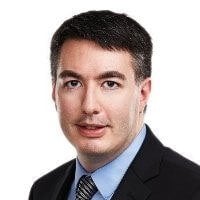
If you are not redirected within 30 seconds, please click here to continue.
Samedi: 10h – 16h HAE

If you are not redirected within 30 seconds, please click here to continue.
If you are not redirected within 30 seconds, please click here to continue.
Requirements and restrictions for getting your G1 in Ontario

Table of Contents
This article has been updated from a previous version.
The journey to becoming a fully licensed driver in Ontario starts with a written test. Once you pass that, you get what’s known as a G1 license, the province’s version of a learner’s permit.
However, as a driver with a G1 licence, you’re limited in terms of what you can and can’t do. Here’s what you can expect during this phase:
What is a G1 License?
A G1 license is the first step in Ontario’s graduated licensing system. To get one, you need to be at least 16 years old and successfully pass a written test. Simple, but this stage comes with these important restrictions:
- Drive only with a fully licensed driver with at least four years of experience, seated in the front passenger seat.
- Avoid highways or expressways with a speed limit over 80 km/h, unless a certified driving instructor accompanies you.
- Maintain a zero-blood alcohol level (BAC) while driving and ensure your accompanying driver’s BAC is below 0.05%, or zero if they’re under the age of 21.
- Make sure all passengers wear seatbelts at all times.
- Avoid driving between midnight and 5 a.m.
This phase is meant to help you learn the rules of the road in a safe and controlled environment. After gaining enough practice and holding a G1 for at least 12 months — or eight months if you complete a government-approved driver education course — you can take your G1 road test and work toward the next level.
Read more: Why Your Driver’s Licence History Matters to Car Insurance Companies
How the G1 licensing program works
To obtain a G-class license in Ontario, you must complete two levels: G1 and G2.
- G1 License: After receiving your G1 license, you must wait 12 months before taking the G2 driving test. However, if you complete a government-approved driver training course, this waiting period is reduced to eight months.
- G2 License: Once you have your G2 license, you have another 12 months to practice before applying for your full G license. The entire process to become fully licensed typically takes between 20 to 24 months.
- Full G License: This final stage equips you with full driving privileges. However, you have five years from the time you get your G1 to complete the entire process. If you don’t, you’ll need to start at square one again.
Related: Annual Best Auto Insurance Study
Importance and benefits of graduated licensing
Ontario’s graduated licensing system isn’t just about following rules — it’s designed to prioritize safety and confidence. By giving you more responsibilities gradually, it reduces the risks of being inexperienced. It takes the pressure off new drivers, as you can focus on improving your skills in stages rather than jumping straight into fully independent driving.
Remember that enrolling in an approved driver education program during the G1 phase comes with added benefits. Not only does it expedite the process (reducing your wait time to eight months), but it can also help lower your auto insurance premiums in the long run.
Requirements for getting G1 licence
First, you should study the most current edition of the Official Ministry of Transportation (MTO) Driver’s Handbook, which can be purchased at certain authorized retailers such as Canadian Tire and Shopper’s Drug Mart, or accessed for free online.
Besides being at least 16 years old, here are a few other requirements that you need to meet:
- Bring identification — You need to provide identification that includes your date of birth, legal name, and signature. This can be your passport, Canadian citizenship card, or permanent or temporary immigration documents. You may also need to bring in additional documents, such as your birth certificate or Ontario health card.
- Pay fees — The current cost to get your G1 is $158.25. It includes the cost of the written knowledge test, the road test to get a G2, and a five-year licensing fee. There are additional costs for the second road test (to become fully licensed) and any retests, if you don’t pass.
- Pass the vision test — If you have glasses or contact lenses, it’s highly recommended that you wear them to the test or you could fail.
- Pass the knowledge test — This test is multiple choice and takes about 20 to 30 minutes to complete. You must get a score of 80% or higher in order to pass. If you don’t pass, you can take the test as many times as you like, but it will cost you $16 for each additional attempt.
Visit any DriveTest location to take the G1 knowledge test. DriveTest centres offer the test on paper, but some locations also provide a computer-based option.
Process for out-of-province individuals obtaining a G1 license
If you’re new to Ontario but hold a driver’s license from another province or country, you’ll need to follow specific steps to join the graduated licensing system.
- License exchange
Ontario allows you to exchange an out-of-province license for an equivalent Ontario license, provided you are from a jurisdiction with a reciprocal agreement. This process often bypasses the G1 and G2 stages. - Knowledge and road tests
If you don’t qualify for a full exchange, you’ll need to start by obtaining a G1 license, which involves passing the written knowledge test and meeting identification requirements. Depending on your experience, you may qualify for immediate advancement to the G2 road test. - International drivers
Those moving from countries without a licensing agreement may need to provide proof of driving experience and start from the G1 phase. Check with your local DriveTest centre for specific requirements.
Learn more: Guide: Auto Insurance for Newcomers to Canada
Impact of violations on insurance and driving records
The G1 phase isn’t just about practicing driving; it’s also when you begin building your driving record. Violations like speeding, failing to follow G1 restrictions, or impaired driving can have serious consequences:
- Higher insurance rates
Insurance companies use driving history to assess risk. A poor record during the G1 or G2 phase could lead to higher premiums for years to come. - Demerit points and suspensions
Accumulating too many demerit points can lead to fines, license suspension, and in some cases, starting the licensing process entirely. For example, holding a G1 with a speeding ticket could set back your progress.
Being careful about road safety and following licensing rules helps you stay on track and saves you money.
Read next: How to handle a traffic violation
Do I need car insurance if I have my G1?
If you have your G1, you can’t purchase your own insurance policy or register a vehicle in your name. Instead, you’ll need to practice driving in someone else’s car, such as your parent’s or guardian’s.
Make sure to be added as an occasional or secondary driver on their insurance policy. This not only allows you to practice legally, but also helps you start building a driving record to show the insurance company when you’re ready to purchase insurance.
While auto insurance premiums will still be higher for new drivers, this is one way to get started on reducing car insurance premiums. There usually aren’t any additional costs to add a G1 driver to a car insurance policy.
Related: Why your driver’s license history matters to car insurance companies
Graduating to G2 and becoming fully licensed
After holding your G1 for the required period and passing the G1 road test, you’ll move on to a G2 license. This stage grants you more flexibility:
- You can drive without supervision.
- You’re allowed on all Ontario roads, including highways.
Keep in mind that obtaining a full license to drive in Ontario can take time. In some cases, up to five years, or even longer, depending on whether you’re able to pass the test. However, all that preparation and training will help you become a safer driver.
Read more: 20 ways to get cheaper auto insurance
Don't waste time calling around for auto insurance
Use RATESDOTCA to shop around, and compare multiple quotes at the same time.
Get money-saving tips in your inbox.
Stay on top of personal finance tips from our money experts!









